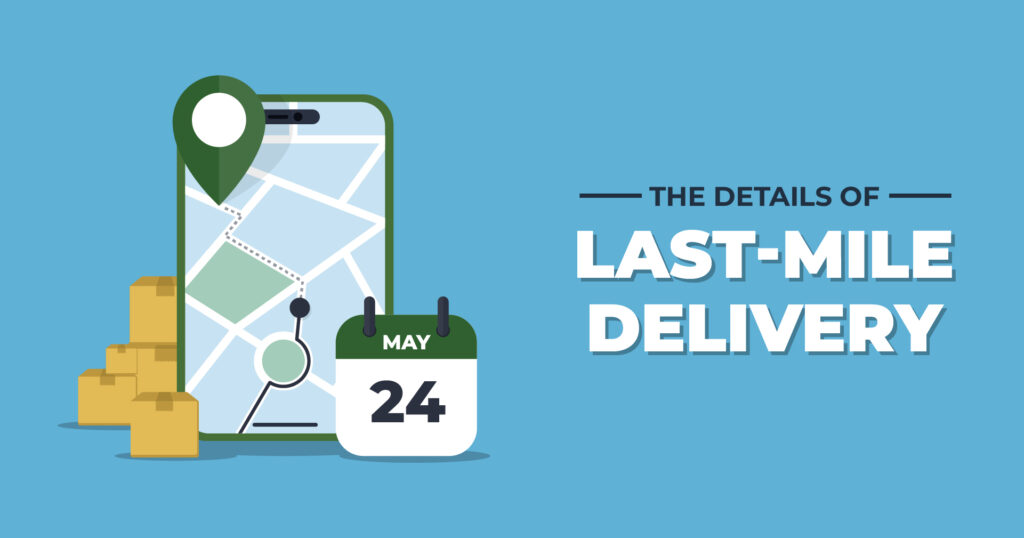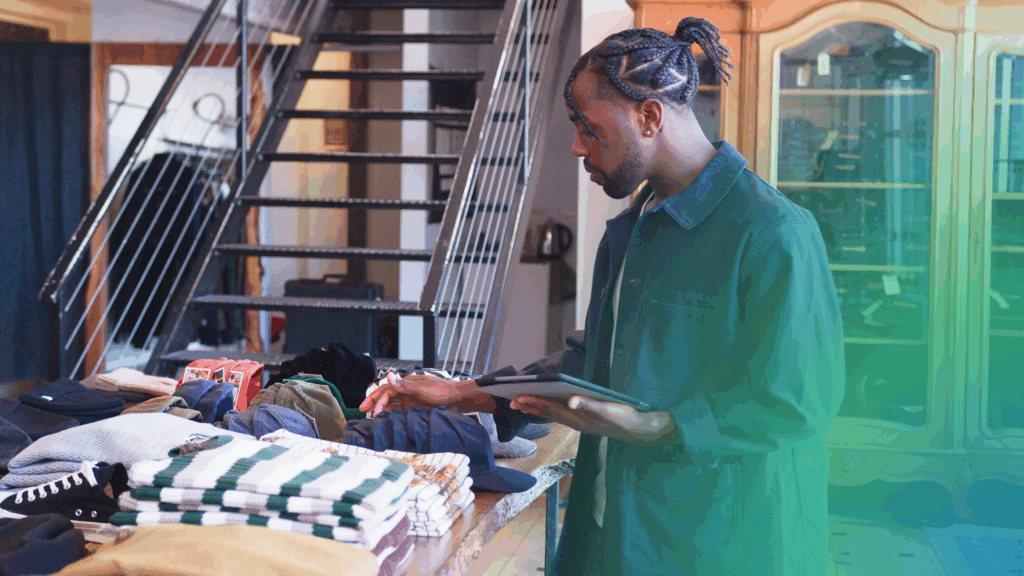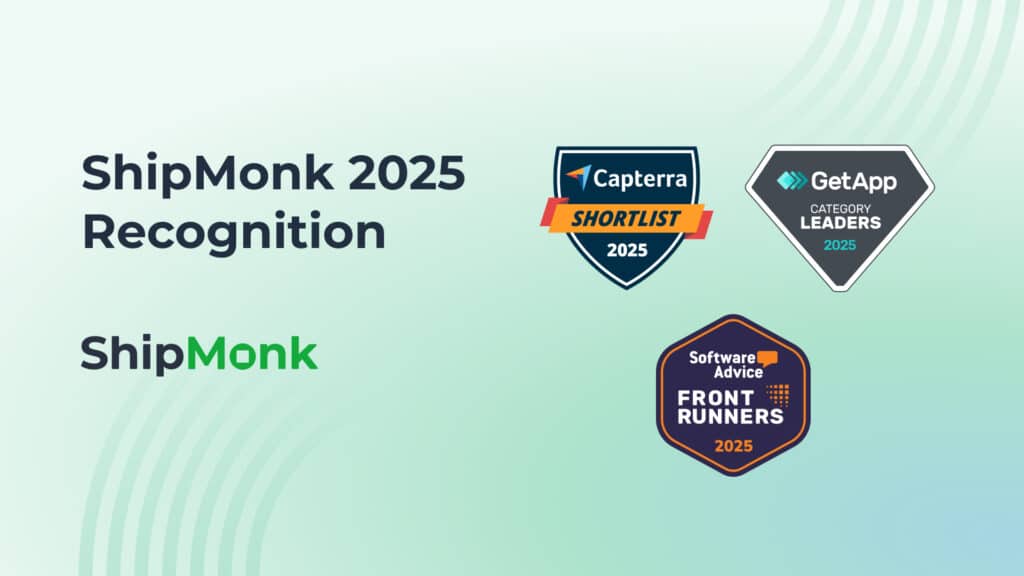When a marathon runner realizes he or she is entering the last mile of a race, the result is joy; the finish line is near. This celebratory final stretch is similar in logistics lingo. Last-mile delivery refers to the last leg of an ecommerce order’s journey. An item has been purchased online, your 3PL has processed the order and sent instructions to the appropriate fulfillment center, and following the picking, packing, and shipping, the package is now on the final phase of its route. This typically means the ecommerce order is on the ultimate truck that will deliver the package to your customer. But this is just a simple view of a multilayered logistics operation that is critical to the success of any ecommerce company, especially considering the great importance that last-mile delivery plays in the market. How important is it?
Last-Mile Delivery Growth
The last-mile delivery market is expected to grow at a CAGR (Compound Annual Growth Rate) of 8.13%, reaching $288.9 billion by 2031. Within this predicted growth there are several key areas of interest to pay attention to. For starters, DTC brands have the highest market share of last-mile delivery utilization. Additionally, last-mile deliveries in urban areas are only increasing annually. According to Insider Intelligence, an estimated 100 million packages will be delivered each day by 2026. What does all this mean if you’re an ecommerce brand? Well, you have to think about cost, customer expectations, and other ecommerce order challenges that affect last-mile delivery excellence.
Last-Mile Delivery in Terms of Costs
Toward the end of 2023, it was analyzed that 53% of total shipping costs are related to last-mile delivery. This can fluctuate per brand and ecommerce order depending on many factors. In terms of the order itself, weights and sizes vary, as well as any special shipping and handling requests and faster delivery options customers may have paid for.
In terms of order fulfillment centers, costs will go down for last-mile delivery if your brand is splitting inventory strategically across different fulfillment centers. By minimizing the shipping zones that need to be traveled, and getting ecommerce orders into the hands of local carriers faster (fewer steps and hands) then costs go down. This is helpful to your bottom line in addition to the grander ecommerce market, as it has been estimated that 17% – 26% by 2025 of last-mile carbon emissions can be reduced by brands leaning into the power of local fulfillment centers.
In terms of shipping carriers, depending on the fulfillment center an ecommerce order is coming from, your shipping carrier(s) might move your package to different facilities and trucks several times. Every major shipping carrier, and the minor ones too, is going to have its own rates. When you work with an established 3PL like ShipMonk, you do have access to prime rates from the big guys like FedEx, UPS, and DHL. Savings aside, rising costs in all aspects of the ecommerce industry are affecting retailers regardless of product category or business size. Rising transportation costs are a huge part of that obstacle, which can’t be controlled. But that is why it is so important for growing brands to entrust their ecommerce order fulfillment to a 3PL that can help you get the best rates at all times so you save money wherever possible.
Last-Mile Delivery in Terms of Customer Expectations
Savvy brands know to keep their customers up to date on all stages of ecommerce orders. There are a slew of key points in a package’s journey that your buyers want to be aware of, hence the need for different kinds of order status notifications—Order Confirmed, Order Shipped, Out for Delivery, etc. That last one is of prime importance because it sets the countdown clock going. This is the last-mile delivery phase of an ecommerce order, and while it means your brand is almost done with its part of the deal, once that notification goes out customers are going to expect a package by EOD.
The issue with that comes down to the many layers of supply chain involved in an ecommerce order journey, and balancing promise with what’s actually possible. It’s true that the ecommerce industry as a whole continues to streamline and optimize. According to Project 44’s State of Transportation Report, the average amount of time from ecommerce order purchase to delivery was approximately 5.8 days in 2021, which sped up to 5.6 days in 2022 and 3.8 days in 2023. However, with increased street traffic congestion, higher order volume, and unexpected delivery delay factors, when a customer receives a notification that a package is in that last-mile delivery (i.e. out for delivery) phase, a promise has been made. That promise, unfortunately, has the potential to negatively impact brand reputation and returning customer likelihood if not delivered on (pun intended, even if it’s no laughing matter).
That’s why it’s so important that your brand always keeps your customers informed on the status of orders. Customers can’t process acceptance of delays if they don’t have the awareness they’re happening. If you can also keep them informed about reasons for delays, or at the very least new expectations for delivery, that can mitigate a lot of fallout. This is so paramount to running a successful ecommerce operation because while delivery delays may not always be the fault of the merchant, they’re always the responsibility and you are who the buyer will blame.
Last-Mile Delivery Common Challenges
With so many moving parts involved in the logistics of getting an ecommerce order to someone’s door, there is room for many things to go wrong. At a glance, some common delivery pain points for ecommerce sellers include:
- Mislabeled packages
- Packages with damaged labels
- Mis-scanned packages
- Lack of visibility and tracking
- Bad weather delays
- Poor route planning
Some of these issues are preventable if you work with an efficient and optimized 3PL. ShipMonk, for example, has an advanced, but simple-to–use platform for order, inventory, warehouse, and shipping management. This software allows total control and total transparency so you can keep track of your orders and keep your customers informed. As for other areas outside a 3PL’s ironclad control, like weather, we have the ability with our Virtual Carrier Network to help you adjust course to save time and money whenever possible. We never handcuff you to one carrier so we can adapt to every situation to get the best scenario for each ecommerce delivery. When you combine that with optimized route planning, you’re in the best place possible to succeed and avoid delays.
Route Optimization for Enhanced Last-Mile Delivery
Route optimization is the process of planning the fastest, most cost-effective way for an ecommerce order to get where it needs to go (from the fulfillment center to your customer’s door). In shortening the distance an order has to travel, your business saves money. And you shorten the distance by:
1.) Selecting the right shipping carrier and shipping method that works for your type of package (size, weight, fragile, temperature controlled) and type of delivery required (overnight, expedited, 2-day, economy, ground, freight, air).
2.) Harnessing the power of tracking and shipping management technology to monitor the progression of your packages, i.e. ensuring they reach their foreseen checkpoints at the expected times.
Benefits of Route Optimization
There are so many reasons to lean into last-mile delivery route optimization. It’s a prominent part of Delivery Management 101—you’ll lower costs and retain more customers if this crucial component of your shipping game is firing on all cylinders. More specifically, route optimization can:
- Make shipping services more affordable
- Increase the speed of deliveries
- Shorten the distances packages need to travel
- Reduce carbon emissions caused by your company
- Let you become more adept at tracking packages for faster issue resolution
- Enhance your brand’s ability to offer transparency to the buyer
Last Paragraph on Last-Mile Delivery
There are many challenges on the ongoing, ever-evolving path to last-mile delivery perfection. That being said, while the room for error is high, it’s not something to shy away from. This element of every logistics operation is vital to ecommerce brand growth, as it’s directly tied to costs and customer satisfaction.
We hope you’ve taken some pointers from this article regarding ways to smooth out any wrinkles in your current last-mile delivery process. Our 3PL is dedicated to fine-tuning every aspect of ecommerce brand operations so that every ecommerce order can make it to its final destination at the best costs and speeds, and the brand it came from is best set up for growth. Give us a call today to learn how our technology, omnichannel order fulfillment services, and strategically located fulfillment centers can bring your last-mile delivery, and other logistics layers, to the next level.





